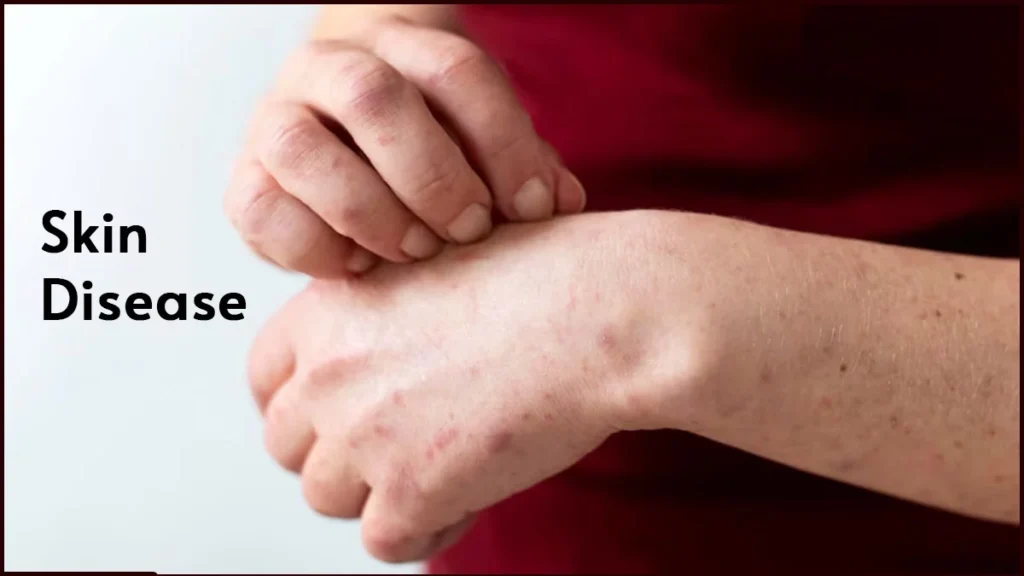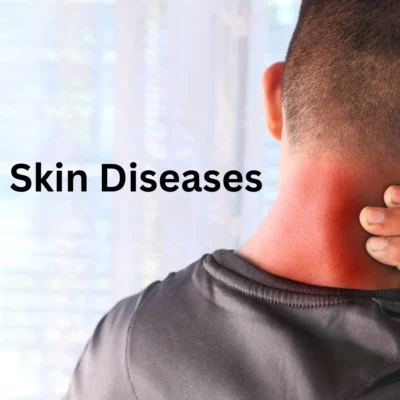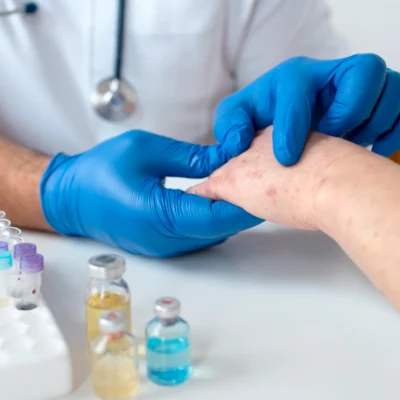
Common Skin Diseases : Types, Symptoms And Prevention
Skin diseases are conditions that affect the skin. These conditions can cause inflammation, rashes, itchiness, and other changes to the skin. Certain skin conditions are genetic, while others result from lifestyle factors. Symptoms often involve visible changes in the skin’s texture, colour, or structure, leading to discomfort, itching, and pain. Dermatologists are doctors who specialize in treating these problems. Depending on the condition, they may prescribe antibiotics, antihistamines, creams, ointments, medications, pills, or suggest lifestyle changes to improve your skin.
Table of Contents
ToggleCommon Skin Disease

- Acne : Acne is one of the most common skin disease treated by dermatologists and healthcare practitioners. It is a chronic inflammatory disease that affects 85% of individuals in their lifetime. Acne commonly presents with whiteheads, blackheads, papules, pustules, and deep nodules. The causes of acne development include altered keratinization of hair follicles, increased sebum production, the proliferation of Propionibacterium, and complex inflammatory mechanisms of immunity. While it mostly occurs during the teenage years, it can also happen in adulthood, especially in women.
- Atopic Dermatitis (Eczema): Atopic dermatitis is a skin disease that causes dry and inflamed skin. It is more common in younger children but can occur at any age. Atopic dermatitis is a chronic disease that tends to flare at times. People with this condition are at a high risk of developing food allergies. Following regular skincare habits can relieve itching and prevent new outbreaks. Treatment may also include medicated creams or ointments.
- Scabies: Scabies is a common skin disease caused by Sarcoptesscabei, highly widespread in various parts of the world. Scabies mostly spreads through the direct contact with an infected person. In industrial societies, it’s often seen in sexually active adults but can also occur in groups of older people living in homes. The ease of transmission appears to depend on the parasitic load, and some patients, especially older ones, may have large numbers of parasites present.
- Skin Cancer: Skin cancer is one of the most common types of cancer, occurring due to abnormal or irregular growth of skin cells. Three primary categories of skin cancer are basal cell carcinoma, squamous cell carcinoma, and melanoma. Minimizing your exposure to ultraviolet (UV) lights can decrease the risk of developing skin cancer. Checking your skin for any doubtful changes can help detect skin cancer in its early stages, giving you a better chance for successful treatment.
- Cellulitis : Cellulitis is a painful skin disease where bacteria infect skin layers and tissue beneath the skin. Skin affected by cellulitis may appear discoloured, red, swollen, and feel warm to the touch. Although this infection can occur anywhere on the skin, it generally appears on the lower leg in adults and on the neck or face in children.
Symptoms of Skin Disease

- Redness: This disease often presents with increased redness in the affected area.
- Warmth: The skin may feel warmer than usual due to increased blood flow to the infected area.
- Rash: Skin disease often manifest as rashes, which can vary in appearance and severity.
- Swelling: Inflammation and swelling are common signs, indicating the body’s response to the skin problem.
- Itching: Persistent itching may be a symptom, accompanying various types of skin disease.
- Pain: Discomfort or pain may be felt in the infected region.
- Pus or drainage: Formation of pus or other discharges suggests a bacterial or fungal skin infection.
- Blistering: Some infections may cause blistering or the formation of painful fluid-filled pockets.
Prevention
- Wash your hands with soap and water properly and at regular intervals.
- Avoid sharing personal items such as towels, soap, clothes, razors, or toys.
- Wash scrapes, cuts, and wounds right away, and cover any skin infections with a bandage after the skin is clean and dry.
- Drink a sufficient amount of water and eat a nutritious diet.
- Avoid direct contact with anyone who has a skin disease.
- Use sun protection creams and lotions to prevent sunburn.

Conclusion
Skin diseases can occur due to viral, bacterial, parasitic, or fungal causes. Many skin diseases show symptoms such as dry skin, itchiness, redness, or rashes. These diseases are often treatable, but severe complications and symptoms can arise in individuals with a weakened immune system. Proper skin care, hygiene, and lifestyle changes can often prevent these infections. Some infections, such as scabies, are contagious, and extra care is needed. If you have any concerns about symptoms or signs of a skin disease, explore the Best Skin Treatment in Mohali at Hale Clinics to address your concerns effectively.
FAQs
Q1 How can we prevent skin disease?
A: Wash your hands Properly , aviod skin to skin contact , don’t share your towel your soap , use sun protection creams.
Q2 How does skin disease affect the body?
A: Skin diseases can affect the body by causing , pain, itching, redness, swelling ,warmth, rash and discomfort.
Q3 Which skin disease is not curable?
A: Vitiligo is a skin disease that is not Curable.
Q4 What is the most common skin disease?
A: The most common skin disease is Acne.
